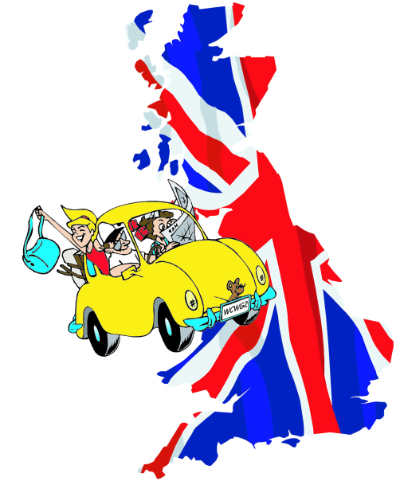Julie Gannon Urban
Julie isn’t an intellectual artist - in fact she shies away from analysing her paintings. This reticence is borne partly out of modesty but is also because she is reluctant to force any narrative on her work. She wants her paintings to have ambiguity and for viewers to experience rather than dissect them. What she does say about her series of urban paintings is that she felt drawn to subjects that spoke in some way to her feelings of isolation and claustrophobia during the Covid Pandemic.
Many of the subjects are in themselves mundane, unremarkable buildings and urban scenes, but Julie’s treatment of them is anything but routine. Her canvases are large, bold, and abstract, conjuring up big emotions and ideas. Imposing angular shapes emerge from the darkness. They have a powerful, even menacing, presence and there is friction and dislocation in their wake.
Superficially Julie’s urban paintings couldn’t be more different than her coastal landscapes. The coastal works are compositions of light and space, luminescence and stillness. I have a painting from her Freshwater West collection. It is a mesmerising mix of dappled pinks, ochres, golds, corals and greys with streaks of black leading you to the horizon. The painting is luminous, almost alive. I wouldn’t be surprised if the colours continued to mix and metamorphise when I look away. Whilst Julie’s urban paintings are much darker, they have many of the same qualities. There is something so very vital about them. They radiate emotion and atmosphere and command attention. But they are also darkly mysterious, drawing you in, inviting you to contemplate your own Covid realities.
Angela Evans
Many of the subjects are in themselves mundane, unremarkable buildings and urban scenes, but Julie’s treatment of them is anything but routine. Her canvases are large, bold, and abstract, conjuring up big emotions and ideas. Imposing angular shapes emerge from the darkness. They have a powerful, even menacing, presence and there is friction and dislocation in their wake.
Superficially Julie’s urban paintings couldn’t be more different than her coastal landscapes. The coastal works are compositions of light and space, luminescence and stillness. I have a painting from her Freshwater West collection. It is a mesmerising mix of dappled pinks, ochres, golds, corals and greys with streaks of black leading you to the horizon. The painting is luminous, almost alive. I wouldn’t be surprised if the colours continued to mix and metamorphise when I look away. Whilst Julie’s urban paintings are much darker, they have many of the same qualities. There is something so very vital about them. They radiate emotion and atmosphere and command attention. But they are also darkly mysterious, drawing you in, inviting you to contemplate your own Covid realities.
Angela Evans
 Fri 4 Jul to Wednesday 30 July
Fri 4 Jul to Wednesday 30 JulySpread the word
Similar Current Events
All That Glitters - Members’ Christmas Exhibition
Tuesday 4 November to Thursday 1 Jan 26 King Street Gallery 33 King Street Carmarthen
Tuesday 4 November to Thursday 1 Jan 26 King Street Gallery 33 King Street Carmarthen
All That Glitters Members’ Christmas Exhibition
Thursday 6 November to Saturday 3 Jan 26 King Street Gallery 33 King Street Carmarthen
Thursday 6 November to Saturday 3 Jan 26 King Street Gallery 33 King Street Carmarthen
Members’ Winter Exhibition
Thursday 6 November to Saturday 3 Jan 26 King Street Gallery 33 King Street Carmarthen
Thursday 6 November to Saturday 3 Jan 26 King Street Gallery 33 King Street Carmarthen




